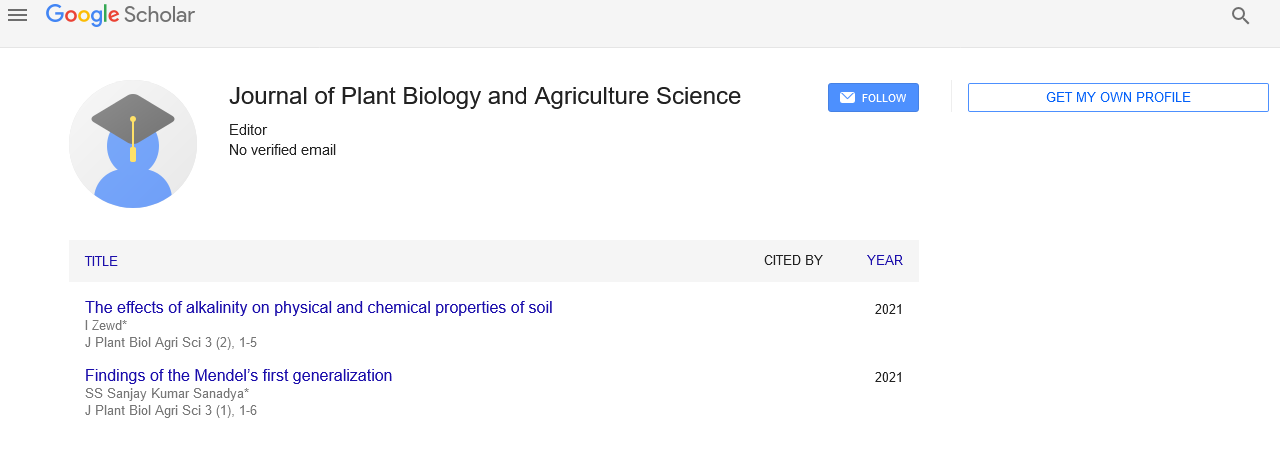
Sign up for email alert when new content gets added: Sign up
Abstract
Mercury contamination in water and its biochemical- physiological responses in fishes
Author(s): Department of Zoology & Aquaculture CCS Haryana Agricultural University, Hisar 125004. India.Mercury contamination in water and its biochemical- physiological responses in fishes
R.K. Gupta
Department of Zoology & Aquaculture
CCS Haryana Agricultural University, Hisar 125004. India.
International concern over the increasing hazards of the industrial and domestic pollutants has focussed particular attention on the toxic effects of heavy metals. Mercury is one of the potential pollutant which attracted worldwide attention because of the mysterious nervous disease called Minammata disease, caused by methyl mercury in the contaminated fish in a Japanese village around the river Minnamata bay. Natural weathering processes and the anthropogenic activities has further resulted in a significant increase in mercury contents in water. Though mercury is one of the less frequently available metal in the earth’s c rust, it is widely disseminated by the natural pressure that it is found practically in everything including the biota.
Technological advancement, industrialization and profit oriented capitalism has been responsible for use and production of a number of chemicals which find their way into the water. Mercury is such a highly toxic non-essential persistent non-biodegradable and immutable heavy metal which undergoes bio-concentration and biomagnifications during its transfer through different tropic levels of the food chain. It constitute a major component in the manufacturing of dyes and paints, chloral kali industries producing casting soda as soda ash, the pharmaceutical industry etc. India alone export around 200 tonnes of mercury per year and most of it finally goes out along with waste water and sludge into the environment. The fish have been found to be a useful model in bioclinical research on toxicology. Effects of Hg on different fish species have been intensively studied by various workers. Two factors need immediate attention are the metal bioavailability which plays a paramount role in heavy metal accumulation in body tissue and their physiological effects. The identification of tissue and species specific physiological measurements in fish can be applicable in determining aquatic health both in the formulation of water quality criteria and as a biological sensor for detecting any sudden change in water quality. Measuring of events like aberrant behaviour, histological lesions or biochemical alterations such as elevation in blood sugars (hyperglycemia), proteolysis and lipolysis as mediated by rise in adrenaline are typically generalized stress responses. in ventilation and heart beat frequency etc are nonspecific, where as changes in cellular enzyme activity and the stress protein induction are specific. The enzymatic functions like changes in SDH and ALAD are categorized as specific responses which may be more suitable for biomonitoring fish health and water pollution in fields.
.Lactate, pyruvate and succinic dehydrogenase enzymes are all key control points in the flow of carbon through glycolysis and the citric acid cycle Mercury is apparently a strong inhibitor of these enzymes in the freshwater teleost, commonly called the murrel. Stress proteins commonly termed as heat stock proteins (hsp) constitute another important feature of chemical toxicity. The stress proteins are a group of cellular proteins whose synthesis increases when the cell is subjected to any sort of stress. Part of the process of acclimation to a toxicant may involve stress proteins. This study thus focus on tissue specific changes in certain digestive and metabolic enzymes and tissue protein profile as an index of Hg toxicity in a most commonly culturable teleost Cyprinus carpio in North Indian conditions. These studies were conducted with respect to body muscles, liver, gills, kidney, and blood.
Study of Gel electrophoretograms of C. carpio, following Hg treatments at 0.025 and 0.05 ppm revealed either higher synthesis of some protein fractions or relative diminishing of some other fractions over the controls. Different tissue however, behaved differently to the Hg treatments. Body muscles manifested in total 10 proteins with better synthesis of proteins of 134.8 and 154.8 KDa Mr over the 9 protein fractions in controls. Likewise liver tissue showed higher expression of 3 protein bands, 2 in blood and 4 in the kidney. Excessive synthesis of 154.8 fractions however was a common factor. Maximum number of diminishing protein fractions was also evident in the kidney tissue of the Hg treated fish. The pattern of alterations in liver and kidney are attributed to the concept that these organs are metabolically involved in detoxification and excretion of the toxic chemicals. The Hg treated fish further exhibited dose dependent inhibition in the activity of certain digestive and metabolic enzymes; such as in proteolytic enzyme (7.6-13.0%), amylase (6.5-8.0%) and lipase (4.7-9.3%). Thus evidencing toxicity induced impaired nutritional status of a Hg treated fish. The level of acid phosphatase was found significantly elevated in muscles (14.2-27.1%), kidney( 65.3- 84.7%) and intestine (15.1-23.0%) but in gills it declined up to 83.6% indicating decrease in lysosomal activity in gills. The level of alkaline phosphatase went high in muscles (83.5%) but declined in other tissues up to 24.2%in kidney, 37.9% in intestine and 34.8% in gills, over the controls. Binding of mercury molecule to enzymes could be the cause of these alterations.
Keywords: Bioclinical, Industrial, Toxicology, Tropic levels.




